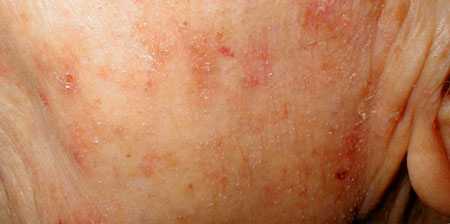AGING SKIN: SKIN CANCERS & TREATMENT SOLUTIONS LIKE METVIX
As we get older, we expect to get wrinkles and some sagging of our skin. If we were sun lovers, we probably wouldn’t be surprised to see some brown spots and red surface capillaries. It can be surprising to see the myriad of other things that come up as we age. More common lesions include red, dome topped spots of varying size which we call cherry angiomas or Campbell de Morgan spots; tan, brown, or black greasy wart-like growths called seborrheic keratoses; and skin tags which seen to pop up around the neck and underarms. These growths thankfully are benign and generally won’t cause any physical distress.
There are some lesions that develop, however, that should not be ignored as a normal part of aging. As a rule, any lesion on the skin that is not healing, or is changing in appearance or size, should be examined by your doctor. It may well turn out that these spots are benign, but they may also be cancerous or pre-cancerous.
THREE MAIN SKIN CANCERS
There are three main types of skin cancer: basal cell cancer, squamous cell cancer (these two are the most common), and malignant melanoma.
Basal cell cancers are a locally invasive cancer, can become very large, and grow into surrounding tissue if not treated. If removed completely, only a regular check-up is necessary. The earlier this is found, the smaller the chunk of skin that needs to be removed.
Squamous cell cancers are locally invasive and have the ability to metastasize. Early detection is important. Even better, it is prudent to remove the precursor lesions called actinic keratoses. They can be recognized as red patches with increased scale.

Malignant melanoma accounts for only 5% of all skin cancers but accounts for 75% of deaths caused by skin cancer. As melanomas grow deeper, the risk of metastasis of the tumor increases. Some melanoma can grow very rapidly, and early diagnosis is essential.
Typical Skin Treatments
Unlike established skin cancers where excision of the cancer is generally the best treatment, precancerous skin lesions can be treated with non-surgical methods. The most common method is the application of liquid nitrogen in which the lesions are destroyed by freezing them. This results in redness and even blistering but the skin generally heals within a week. This is a good treatment for people with several isolated actinic keratoses. However, it is not uncommon to see people who have dozens or hundreds of lesions on sun exposed (e.g. face, chest, balding scalp). It is difficult and impractical to treat these all with liquid nitrogen. Fortunately, there are other treatments available.
Topical creams, like 5-flourouracil and imiquimod, applied to the affected area work and spots become very red (and may peel / crust).
Unfortunately, both medications have to be used for a month or more – and patients often find the disfiguration unacceptable for that long.
PHOTODYNAMIC THERAPY
Photodynamic therapy is another treatment that can cover large surface areas. First, the medication accumulates in the precancerous cells, and then a specific light wavelength is activated to destroy just the target. Generally, just two treatments are necessary, but the clearance rate of actinic keratoses is over 90%. Patients can be quite red and crusted after the treatment, but generally heal within a week.
We have recently been using a lot of methyl-ALA (Metvix photodynamic therapy) and have been very impressed. Areas of the skin where the pre-cancers were not yet even visible are being targeted and treated, and it methyl-ALA has also been able to treat early basal cell cancers that cover large surface areas where excision would have been difficult. In addition, almost all medical insurance companies cover the cost of the medication.
Bottom line: get your skin checked out by a physician… and wear sunscreen.
More about Metvix skin treatment…























